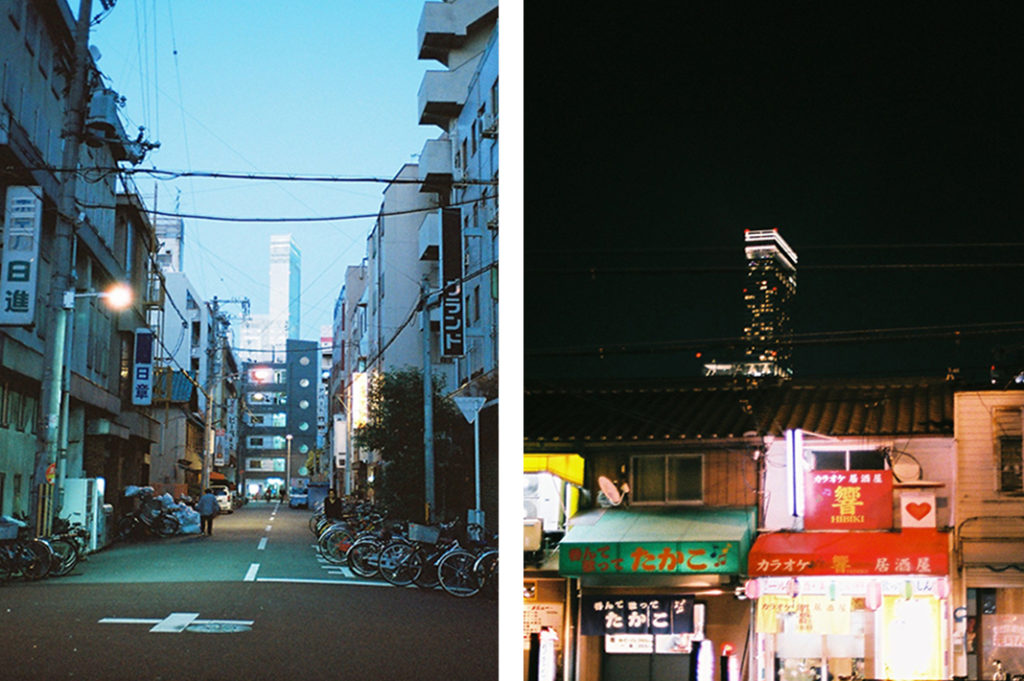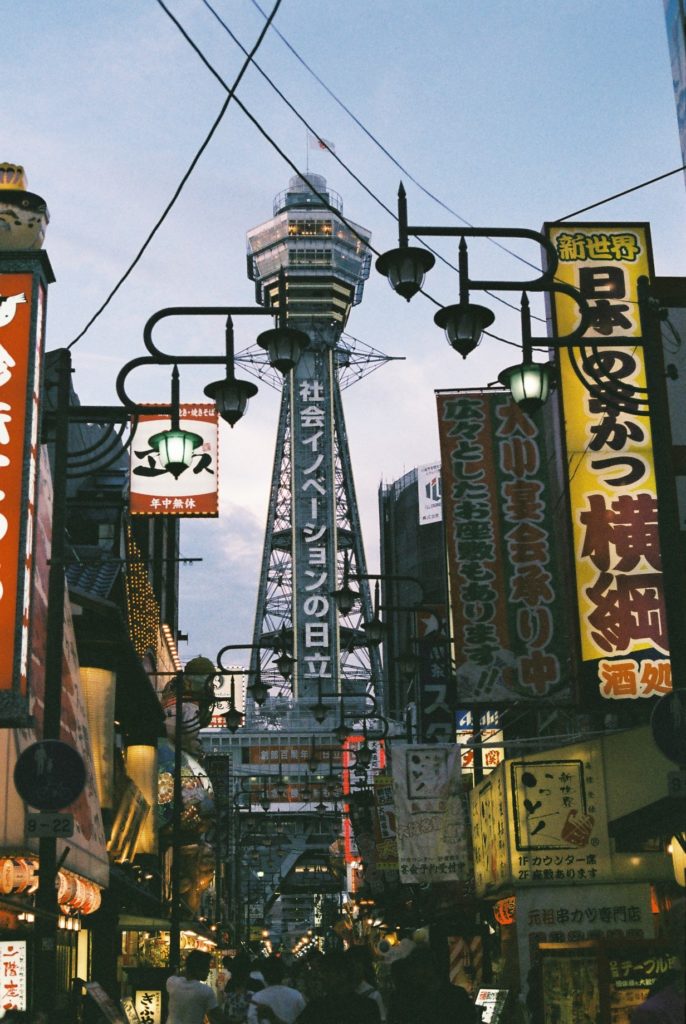
At night, from atop the vertiginous heights of the Abeno Harukas mega-tower, the lights of Osaka shine to the horizon, almost into infinity. Highways glow with pulsing electricity, like arteries carrying the city’s lifeblood from district to district.
The Abeno tower is so effective in captivating visitors with far-off illuminations that most forget to look directly downwards, southbound towards a district that’s darker than the others.

Nishinari: in the Shadow of the Two Towers
Nishinari is a district in southern Osaka that has earned a colourful reputation over the last century. Initially, its tale began with the construction of the ‘Luna Park‘ and accompanying Tsutenkaku Tower. Luna Park was completed in 1912 – the first year of Emperor Taisho’s 24-year reign.
However, the amusement park did not outlast the Emperor and was closed permanently in 1923. Thus, a cycle began: old neighbourhoods pushed aside for gleaming futuristic towers and Japan’s love affair with ‘urban renewal.’ Just over 100 years later, the cycle began again, with the construction of the vertiginous Abeno Harukas building in Tennoji.
Shinsekai [新世界・’New Life’] was an entertainment district build directly around Tsutenkaku Tower and the Luna Park. In its heyday, it was a dazzling warren of argon lights and vibrant culture. However, by the early 2000s, Shinsekai had become a ‘doya-gai‘ – a flophouse district or ghetto. Businesses were rife with organised crime and the district had the highest concentration of homelessness, drug use and illness anywhere in Japan.

Shinsekai: New made old, made new
In 2014, Shinsekai’s slow fall from grace and into dilapidation was remedied expediently after the completion of the shining Abeno Harukas building. The building included a high-class department store, multiple restaurants and a partial rebuild of adjoining Abeno and Tennoji train stations. The project transformed Tennoji from a grimy downtown district to an attractive shopping hub.
(You can read the rest of the article at this link. This article was first published by Team JJ on April 8, 2022. Check here for deeper and unique insights into visiting Japan, including wellness, travel, cuisine and more. Find us on Instagram and on Facebook.)
Author: Team JJ








